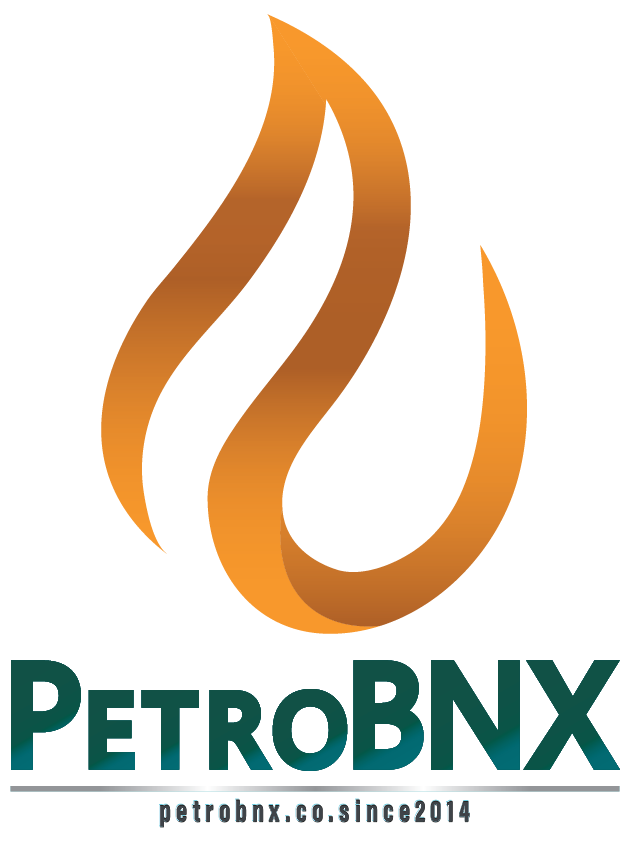Fuels
Showing the single result
What is Fuel?
According to Newton’s law of conservation of energy, energy is neither created nor destroyed; it can only be converted from one form to another. Therefore, energy cannot be produced for performing tasks; it can only be transformed from one form to another using specific materials. These materials are called fuel.
For example, when burning paper with a matchstick, light is not directly produced; rather, the heat energy from the matchstick is converted into light energy. In reality, different types of fuel are substances that, through reactions with other materials, release heat.
How is Fuel Formed?
Fuels include solid fuels (such as firewood, coal, and charcoal), liquid fuels (such as gasoline and alcohol), and gaseous fuels (such as natural gas and biogas).
During the process of photosynthesis in plants, solar energy is converted into chemical energy. Therefore, when burning wood or dried plants, it is the stored energy within them that produces heat and light. Today, wood is no longer considered the primary fuel source for humans; instead, liquid and gaseous petroleum fuels or coal are more commonly used.
Classification of Fuels
Fuels are categorized in various ways. They can be classified into fossil fuels (derived from the remains of living organisms) and non-fossil fuels (such as wood and alcohol), or into natural fuels (such as wood and crude oil) and synthetic fuels (such as gasoline and charcoal).
The most important classification of fuels is based on their initial physical form. Accordingly, fuels are divided into:
- Solid fuels (such as firewood, coal, and charcoal)
- Liquid fuels (such as gasoline and alcohol)
- Gaseous fuels (such as natural gas and biogas)
The selection of an appropriate fuel for a specific application depends on factors such as availability, storage, transportation, pollution levels, and cost.
Types of Chemical and Nuclear Fuels
Chemical Fuels
Substances that release energy through combustion reactions with other materials are called chemical fuels. Chemical fuels are classified based on:
- Physical state: solid, liquid, or gas
- Origin:
- Primary (natural) fuels (such as crude oil and coal)
- Secondary (synthetic) fuels (such as gasoline and processed coal)
Nuclear Fuels
Substances that release energy through nuclear fission are called nuclear fuels. Nuclear fission is a process in which a heavy atom, such as uranium, splits into two lighter atoms, releasing a significant amount of energy.
Technically, energy can be produced from various materials, but not all are suitable for efficient and controlled energy release.
For nuclear energy production, only fissionable elements are used. Common nuclear fuels include Uranium-235 (²³⁵U) and Plutonium-239 (²³⁹Pu).
Types of Fuel Based on Formation
Natural (Primary) Fuels
These are fuels that exist naturally in the environment, including:
- Fossil Fuels:
Fossil fuels are the decomposed remains of plants and animals that have been subjected to high pressure and temperature under the Earth’s crust for millions of years. The primary component of fossil fuels is hydrocarbons, making them the most commonly used energy sources today.Key characteristics of fossil fuels:- Non-renewable: Once consumed, they cannot be replenished in a short period.
- Environmental impact: They contribute significantly to pollution and climate change.
- Examples: Coal, crude oil, and natural gas.
Synthetic (Secondary) Fuels
These fuels are artificially produced through industrial processes, including:
- Hybrid Synergy Drive (HSD) Fuel:
A new fuel technology developed by Toyota, HSD combines a gasoline engine with an electric motor. The gasoline engine powers the vehicle while simultaneously charging the electric motor, which can then be used as an energy source. - Biodiesel:
Biodiesel is a renewable fuel made from animal fats and vegetable oils. Unlike fossil fuels, it is more environmentally friendly and contributes less to pollution.
Types of Fuel Based on Renewability
Renewable Energy Sources
Renewable fuels can be replenished and never run out. These include:
- Solar energy
- Wind energy
- Hydropower (water energy)
- Biomass energy
- Geothermal energy
- Electricity
- Biodiesel
- Alcohol-based fuels
- Other non-fossil and synthetic fuels
Renewable fuels are also known as alternative fuels because they serve as substitutes for fossil fuels.
Nonrenewable Energy Sources
Nonrenewable fuels are limited and exhaustible. Once consumed, they cannot be replenished within a human timescale. These include:
- Fossil fuels (coal, crude oil, and natural gas)
- Nuclear fuels
- Natural gas and other naturally occurring fuels
Types of Fuel Based on Physical Properties
Solid Fuels
Solid fuels are those that remain in a solid state at room temperature. Some of the earliest discovered and most influential fuels, such as wood and coal, have played a key role in human civilization—from early fire-making to powering industrial furnaces during the Industrial Revolution.
Types of Natural Solid Fuels:
- Wood: Includes firewood, charcoal, wood chips, and more.
- Coal: A combustible sedimentary rock.
- Biomass: Organic plant materials such as wheat, straw, and other crop residues.
- Peat: Decomposed plant matter found in wetlands.
- Coke: A high-carbon material derived from coal.
- Waste: Non-toxic everyday waste converted into solid fuel.
Types of Synthetic Solid Fuels:
- Charcoal: Produced by heating wood in the absence of oxygen.
- Paraffin & Tallow: Used mainly in candle-making.
Advantages of Solid Fuels:
✅ Easy to store and transport
✅ Low production cost
✅ Moderate combustion temperature
✅ Lower sulfur emissions compared to liquid fuels
Disadvantages of Solid Fuels:
❌ High energy loss during combustion
❌ Expensive transportation and handling
❌ High environmental pollution
❌ Requires large furnace space for combustion
Liquid Fuels
Liquid fuels remain in liquid form at room temperature and are mostly derived from the fossilized remains of plants and animals over millions of years.
Types of Natural & Synthetic Liquid Fuels:
- Crude oil and its derivatives
- Coal tar-derived oils
- Common petroleum products:
- Kerosene: Derived from crude oil with a boiling range of 150-300°C.
- Gasoline (Petrol): The most widely used liquid fuel.
- Aviation Gasoline (Avgas): Used in piston-engine aircraft with spark ignition.
- Aviation Turbine Fuel (Avtur): Used in turbine-engine aircraft.
- Marine Diesel Fuel (MDF): Used in diesel engines of heavy-duty vehicles and industrial machines.
- Marine Fuel Oil (MFO): Used in steam-powered plants and heavy vehicles.
- Liquefied Petroleum Gas (LPG): A mixture of propane and butane, cleaner than other hydrocarbon fuels.
- Alcohols: Common types include methanol, ethanol, and butanol.
- Liquefied Hydrogen: Used in rockets and spacecraft due to its high cryogenic properties.
Advantages of Liquid Fuels:
✅ High calorific value (energy output during combustion)
✅ Lower energy loss
✅ Less environmental pollution
✅ Easier combustion control
✅ Easier storage and transport
✅ Requires less furnace space
✅ Higher safety
Disadvantages of Liquid Fuels:
❌ Higher cost
❌ Expensive storage
❌ High fire risk
❌ Requires specialized burning equipment
Gaseous Fuels
Gaseous fuels exist in a gaseous state and can be found naturally or synthesized from solid and liquid fuels.
Types of Gaseous Fuels:
- Natural Gas: Mainly composed of methane, used for cooking and heating.
- Synthetic Gas: Produced from hydrogen, carbon monoxide, and hydrocarbons.
Types of Natural and Synthetic Gaseous Fuels
- Natural Gas and Its Derivatives:
Natural gas is one of the fossil fuels that has fewer harmful effects compared to other fossil fuels. Its derivatives include ethane, propane, methane, and more. - Coal Gas:
This fuel is obtained by converting coal into coke. It is used for electricity generation in metal smelting plants. - Water Gas:
A synthetic gas composed of hydrogen and carbon monoxide. It is produced by passing steam over coke. - Syngas (Synthetic Gas):
A synthetic gas made up of hydrogen, carbon monoxide, and carbon dioxide. - Biogas:
This fuel is produced from the decomposition of organic materials in the absence of oxygen. - Blast Furnace Gas:
This gas is a byproduct of iron production in blast furnaces.
Gaseous Fuels
Natural gas, coal gas, and water gas are the most important types of gaseous fuels. Natural gas is primarily used for cooking and heating. It can be found deep underground, often near oil fields.
Coal gas is a mixture of hydrogen, methane, other hydrocarbons, carbon monoxide, and small amounts of nitrogen, oxygen, and carbon dioxide. It is produced during the conversion of coal into coke and is used for electricity generation in metal smelting factories.
Water gas consists of hydrogen and carbon monoxide and is produced by passing steam over hot coke. It has various industrial applications.
Butane gas is another significant gaseous fuel.
Advantages of Gaseous Fuels:
- Easier to transport compared to other fuels
- Very easy to ignite
- High calorific value
- No need for special ignition equipment
- Environmentally friendly and non-polluting
- Cost-effective and economical
Disadvantages of Gaseous Fuels:
- Requires large storage tanks
- High risk of fire hazards
- Requires strict safety measures
Characteristics of an Ideal Fuel:
- Readily available
- Affordable
- Burns easily at a moderate rate in the air
- Produces a significant amount of energy
- Does not create pollution
- Not harmful to the environment
Comparison of Mazut and Diesel
Mazut and diesel are two types of fuel widely used in industries and transportation. In this article, we will compare these two fuels and discuss their differences and applications.
Key Differences Between Mazut and Diesel
Chemical Composition:
Mazut consists of heavier hydrocarbons, while diesel is composed of lighter hydrocarbons.
Ignition Temperature:
Diesel ignites at lower temperatures compared to mazut, which requires higher temperatures for combustion.
Applications:
- Mazut is primarily used in industries such as heaters, furnaces, and power plants.
- Diesel is commonly used in vehicles, boats, and transportation equipment.
Uses of Mazut:
- Power plants and thermal power stations
- Industrial furnaces and components
- Industrial heating systems
- Railway transportation systems
Uses of Diesel:
- Diesel-powered vehicles
- Boats and ships
- Agricultural and construction machinery
- Oil and gas equipment
Advantages and Disadvantages of Mazut:
Advantages:
- Relatively lower cost compared to other fuels
- Higher stored energy compared to diesel
- Suitable for large-scale industrial systems
Disadvantages:
- Causes more air pollution and environmental damage compared to diesel
- Requires high temperatures for complete combustion
- Needs specialized equipment for storage and pumping
Advantages and Disadvantages of Diesel:
Advantages:
- High energy density and efficiency
- Less air pollution and environmental impact compared to mazut
- Easy ventilation and handling
Disadvantages:
- More expensive than mazut
- Requires advanced technology for refining and pollution control
- Environmental impacts related to oil extraction
Important Considerations for Using Mazut and Diesel:
- Observing safety measures and precautions in storage and usage is essential for both fuels.
- Selecting the appropriate fuel based on the specific needs and applications of the system or vehicle is crucial.
- Proper maintenance and care of equipment and vehicles are necessary to ensure fuel efficiency and longevity.
- When using mazut or diesel in diesel vehicles, regular maintenance of the fuel injection system is required.
By reading this article, you will gain a better understanding of the differences, applications, advantages, and disadvantages of mazut and diesel, helping you choose the right fuel based on your needs.

